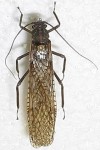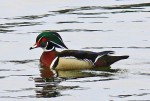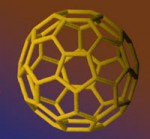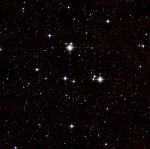The Animals, Vegetables and Minerals of the States
/https://tf-cmsv2-smithsonianmag-media.s3.amazonaws.com/filer/20110520102341800px-Basilosaurus_cetoides_skeleton.JPG)
Wisconsin legislators last week voted on a new state symbol; the official state microbe is now Lactococcus lactis, the bacterium used to make cheddar, Colby and Monterey Jack cheeses. As far as I can tell, Wisconsin will be the first state to declare an official state microbe. Plenty of states have official trees, flowers, gems, birds, fish, vegetables, insects, reptiles, mammals and/or butterflies. I had no idea, though, that so many had official soils, dinosaurs and shells. But I am even more amused by the states, like Wisconsin, that have gotten even more creative in their designations of natural-world symbols. Here are eight examples:
Alabama state fossil: Basilosaurs cetoides, a prehistoric whale that lived around 35 million years ago. Also the state fossil of Mississippi.
Delaware state macroinvertebrate: The stonefly, an indicator of water quality. It's one of three state insects designated by Delaware.
Idaho state raptor: The peregrine falcon (Falco peregrinus). That's separate from the state bird, which is the mountain bluebird (Sialia arctcia).
Mississippi state waterfowl: The wood duck, which lives year-round in the state's swamps.
North Carolina state carnivorous plant: The Venus flytrap (Dionaea muscipula), native to the Carolinas and listed as a "Species of Special Concern" in North Carolina due to its dwindling numbers in the wild.
Oklahoma state furbearer animal: The common raccoon (Procynn lotor) was designated in 1990 due to the popularity of "coon hunting," which the state declared "an exciting sport for many outdoorsmen who enjoy following the sound of baying hounds through the fields."
Texas state molecule: The buckyball, a spherical fullerene shaped like a soccer ball, discovered by two Texas chemists who won a Nobel Prize for their work.
Utah state astronomical symbol: The Beehive Cluster, which is located in the constellation Cancer, was chosen because "this symbol, composed of a hive of stars, transposes our beehive symbol to a new and grand level as we enter our second century as a group of people living in a place where we can still see, with our own eyes, the beautiful and dim features of the starry universe."
What's your favorite state symbol? Or if you could designate one for your state, what would it be?
/https://tf-cmsv2-smithsonianmag-media.s3.amazonaws.com/accounts/headshot/Sarah-Zielinski-240.jpg)







/https://tf-cmsv2-smithsonianmag-media.s3.amazonaws.com/accounts/headshot/Sarah-Zielinski-240.jpg)